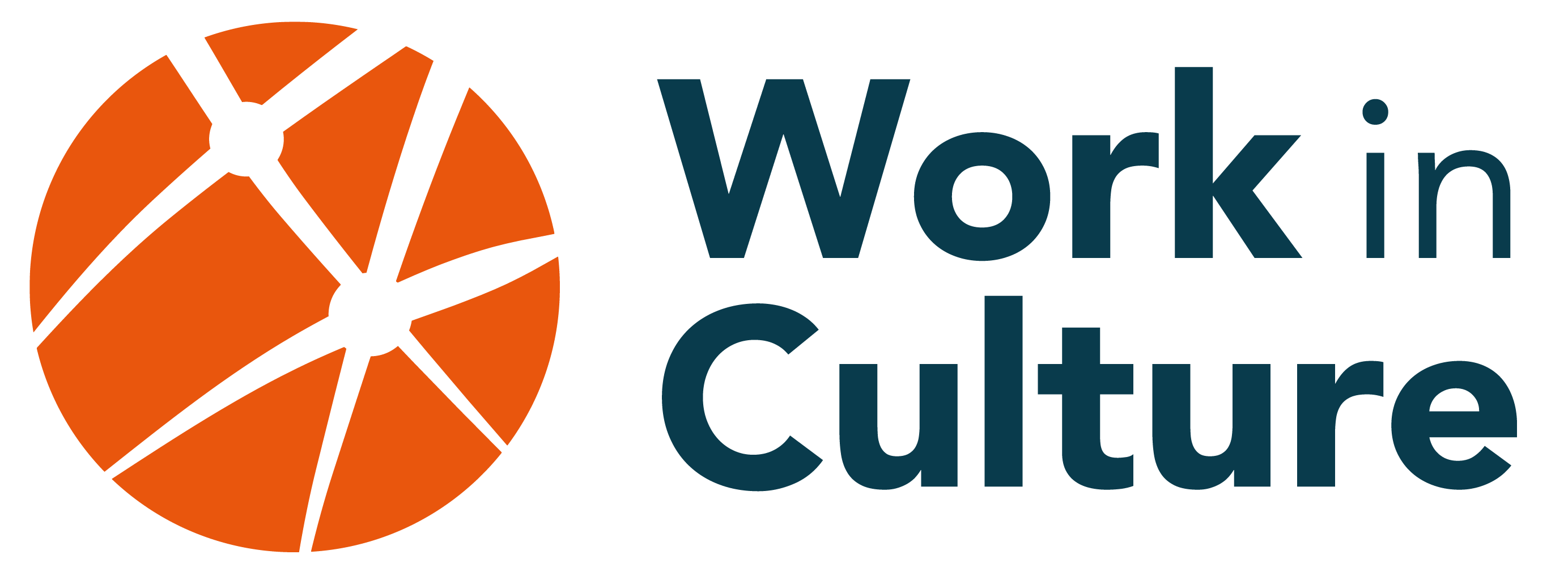
| Prioritizing Access (Volunteers) | Inclusive Workshops (Teaching Tips) | Support Providers | Leaders with Disabilities | Trauma-Informed Practices | Meaningful Outreach |
Written by Emily Gillespie
Introduction
Volunteers are a vital part of the arts and culture sector and they have the opportunity to make the arts more accessible. This post focuses on events; however, the ideas can be applied to volunteers and placement students supporting daily operations.
Prior to events, such as a conference or festival, you may want to establish a volunteer accessibility committee and an access plan. The committee which primarily consists of people with various disabilities can serve as a consulting group. They may do things such as screen venues for accessibility. Thinking about accessibility happens before, during and after events, and volunteers can be involved in all stages of this process along with staff.
Accessibility is not something that can be completely established prior to an event; creating more accessible spaces is part of an ongoing dialogue. For instance, what if an event is promoted as being accessible, but participants cannot find the accessibility features? That is why having staff and volunteers who are aware of the accessibility features of the event are essential. Bigger events often have a visibly marked accessibility team.
An accessibility team may do things such as problem solve (perhaps the Live Captioning is not working) and help folks navigate accessibility features such as finding the accessible washroom or getting around construction. This blog provides a few guidelines on accessibility; please ensure that all volunteers are aware of the Accessibility for Ontarians with Disabilities Act (AODA) and that volunteer orientation and manuals follow the AODA requirements, see resources included under Further Reading.
A Few Things to Remember for Events
- Make it clear what each volunteer role entails, so that volunteers know how much time and energy they are committing.
- Are there opportunities for disabled people to be involved and volunteer? Have an accessibility plan for disabled volunteers.
- Ensure that volunteers that are not directly part of the access team are still thinking about accessibility; for instance, can they direct a person to an access team volunteer? Are they aware of how to work with service providers such as ASL? Can they remind participants to speak into the microphone? Are the folks setting up the room aware of space for people using mobility devices etc.?
- Ensure that the accessibility team and volunteers have sufficient training, are familiar with the venue (and any potential challenges with the venue), and that volunteers have supports, such as a system for checking-in with other volunteers and staff. It may be beneficial to create training documents, especially if you are running a reoccurring event or coordinating a big team.
- Introduce participants to the visibly marked access team volunteers (or general volunteers) and mention what they do (it may be helpful to think about what positions may need paid trained staff versus volunteer supports).
- It’s okay for volunteers to say no and have boundaries; for instance, maybe they can’t physically push a mobility device, that’s okay.
- Remind volunteers to ask first and follow the lead of disabled people for instance asking, “Can I assist you? Do you need anything?”
- Think about where volunteers are placed; for instance, if there’s an active listener, can a disabled person easily get to them during an event?
- Volunteers do not need to know everything about all disabilities, but should be committed to challenging ableist thinking, not making assumptions about needs, not framing accessibility as a burden, being mindful of oppressive language, etc.
Conclusion
Disabled people have various needs at different times and folks with similar disabilities may have different access needs. Developing accessibility plans and best practices is part of an ongoing conversation. Develop a process for collecting and documenting feedback from attendees and volunteers during and after the event, and use this material to enhance further volunteer trainings and events. This is the start of thinking about accessibility, please consult AODA guides.
References:
https://rootedinrights.org/how-to-make-your-social-justice-events-accessible-to-the-disability-community-a-checklist/
AODA information:
https://accessforward.ca/customerService/intro
https://www.aoda.ca
https://www.ontario.ca/page/accessibility-rules-businesses-and-non-profits
https://www.volunteertoronto.ca/page/AODA2
http://www.hotdocs.ca/p/volunteer-resources
Further Reading:
https://www.asanet.org/accessibility-is-for-everyone-how-to-rock-your-asa-presentation-and-make-it-inclusive/
http://tangledarts.org/wp-content/uploads/2018/10/Accessibility_Toolkit-1.pdf
###
More blogs from this series:
| Prioritizing Access (Volunteers) | Inclusive Workshops (Teaching Tips) | Support Providers | Leaders with Disabilities | Trauma-Informed Practices | Meaningful Outreach |
Emily Gillespie is a Toronto-based author and disability consultant, who enjoys using art to talk about disability. Emily recognizes that disabled people have different experiences and through her work focuses on people’s individual needs.
Follow Emily on Facebook and Twitter | Follow Accessibility Advocacy Art on Facebook
